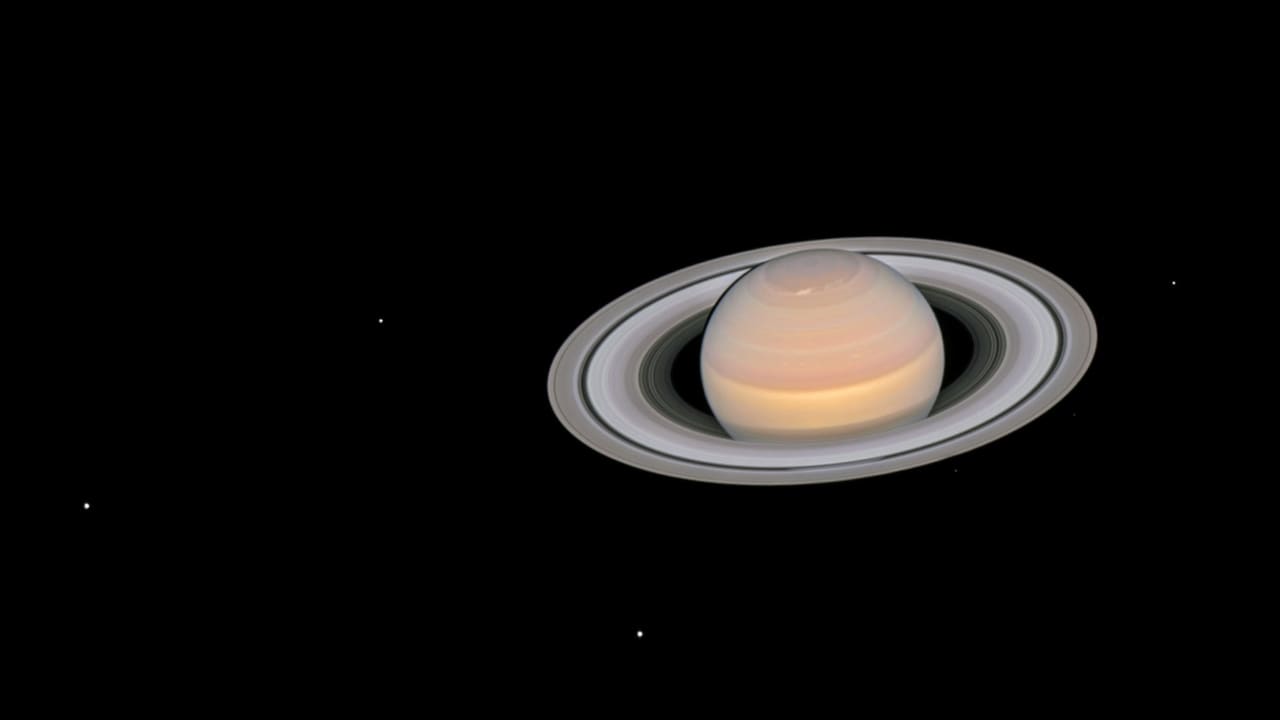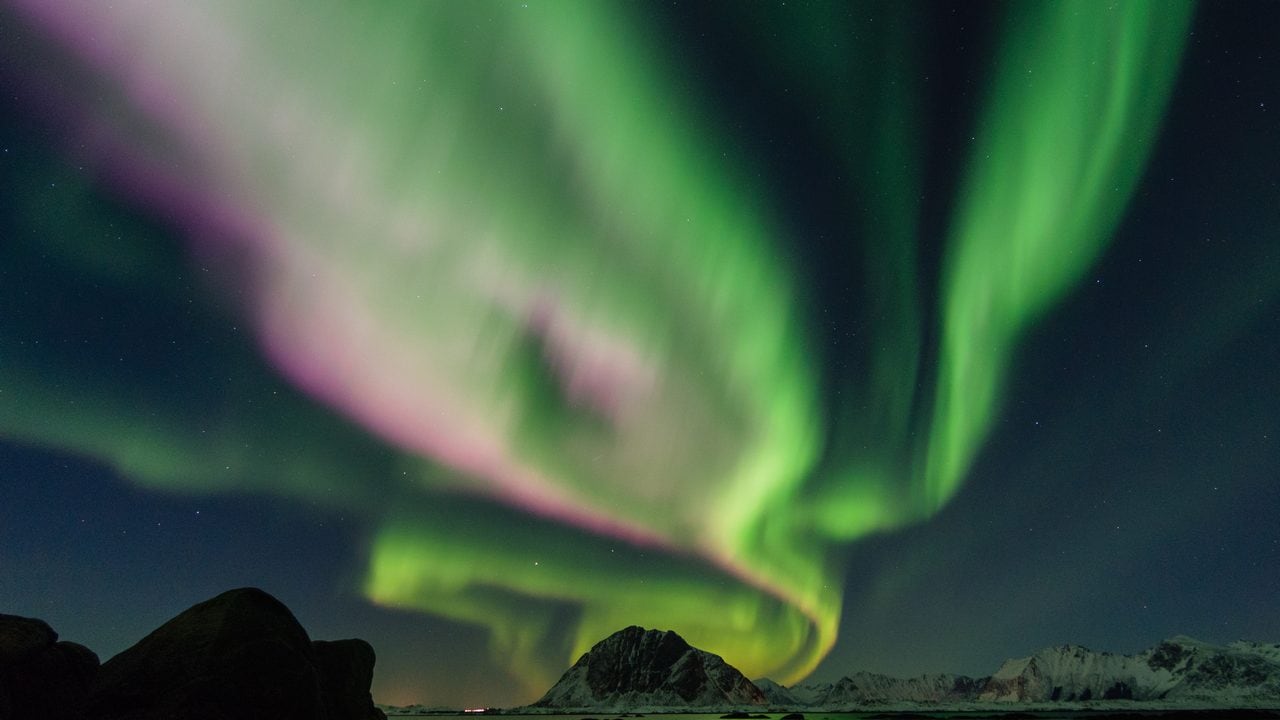Folks , I had a minor EUREKA moment of my own just now :)) You see , I had a strong gut feel about this topic , but wanted to find firm , indisputable evidence of a pattern , before posting about it . The inner Sun of Hollow planets must be pumping heat via their Polar openings , thus affecting climate on the outer surface of planets !
In financial investigations , the basic principle is "Follow the money trail to find the truth" , so for our Hollow planet research , I propose "Follow the energy trail to find the source"...
"New analysis of data from NASA's Cassini spacecraft found that electric currents, triggered by interactions between solar winds and charged particles from Saturn's moons, spark the auroras and heat the planet's upper atmosphere."
Couldn't the same type of heating on Earth's Polar regions be triggering the abnormal heat wave in the Arctic ? We need to remember that the same laws of physics must apply to all planets...so couldn't the Earth's SMOKY GOD (Inner Sun) , be the SMOKING GUN for the ongoing Arctic heat wave via the Polar opening (pun intended) ??
"The upper layers in the atmospheres of gas giants -- Saturn, Jupiter, Uranus and Neptune -- are hot, just like Earth's. But unlike Earth, the Sun is too far from these outer planets to account for the high temperatures. Their HEAT SOURCE has been one of the great MYSTERIES of planetary science."
**It now looks clear that the upper atmosphere of all the 4 gas giants (true planets) of our Solar system are way hotter than they should be , despite their vast distance from the Sun :-
What makes Saturn's atmosphere so hot
New mapping of the giant planet's upper atmosphere reveals likely reason why it's so hot
Date:
April 6, 2020
Source:
University of Arizona
Summary:
New analysis of data from NASA's Cassini spacecraft found that electric currents, triggered by interactions between solar winds and charged particles from Saturn's moons, spark the auroras and heat the planet's upper atmosphere.
Share:
FULL STORY
The upper layers in the atmospheres of gas giants -- Saturn, Jupiter, Uranus and Neptune -- are hot, just like Earth's. But unlike Earth, the Sun is too far from these outer planets to account for the high temperatures. Their heat source has been one of the great mysteries of planetary science.
New analysis of data from NASA's Cassini spacecraft finds a viable explanation for what's keeping the upper layers of Saturn, and possibly the other gas giants, so hot: auroras at the planet's north and south poles. Electric currents, triggered by interactions between solar winds and charged particles from Saturn's moons, spark the auroras and heat the upper atmosphere. (As with Earth's northern lights, studying auroras tells scientists what's going on in the planet's atmosphere.)
The work, published today in Nature Astronomy, is the most complete mapping yet of both temperature and density of a gas giant's upper atmosphere -- a region that has been poorly understood.
"Understanding the dynamics really requires a global view. This dataset is the first time we've been able to look at the upper atmosphere from pole to pole while also seeing how temperature changes with depth," said Zarah Brown, lead author of the study and a graduate student in the University of Arizona Lunar and Planetary Laboratory.
By building a complete picture of how heat circulates in the atmosphere, scientists are better able to understand how auroral electric currents heat the upper layers of Saturn's atmosphere and drive winds. The global wind system can distribute this energy, which is initially deposited near the poles toward the equatorial regions, heating them to twice the temperatures expected from the sun's heating alone.
"The results are vital to our general understanding of planetary upper atmospheres and are an important part of Cassini's legacy," said study co-author Tommi Koskinen, a member of Cassini's Ultraviolet Imaging Spectograph team. "They help address the question of why the uppermost part of the atmosphere is so hot, while the rest of the atmosphere -- due to the large distance from the Sun -- is cold."
Managed by NASA's Jet Propulsion Laboratory in Southern California, Cassini was an orbiter that observed Saturn for more than 13 years before exhausting its fuel supply. The mission plunged it into the planet's atmosphere in September 2017, in part to protect its moon Enceladus, which Cassini discovered might hold conditions suitable for life. But before its plunge, Cassini performed 22 ultra-close orbits of Saturn, a final tour called the Grand Finale.
It was during the Grand Finale that the key data was collected for the new temperature map of Saturn's atmosphere. For six weeks, Cassini targeted several bright stars in the constellations of Orion and Canis Major as they passed behind Saturn. As the spacecraft observed the stars rise and set behind the giant planet, scientists analyzed how the starlight changed as it passed through the atmosphere.
Measuring how dense the atmosphere is gave scientists the information they needed to find the temperatures. Density decreases with altitude, and the rate of decrease depends on temperature. They found that temperatures peak near the auroras, indicating that auroral electric currents heat the upper atmosphere.
Density and temperature measurements together helped scientists figure out wind speeds. Understanding Saturn's upper atmosphere, where planet meets space, is key to understanding space weather and its impact on other planets in our solar system and exoplanets around other stars.
"Even though thousands of exoplanets have been found, only the planets in our solar system can be studied in this kind of detail. Thanks to Cassini, we have a more detailed picture of Saturn's upper atmosphere right now than any other giant planet in the universe," Brown said.
The Cassini-Huygens mission is a cooperative project of NASA, the European Space Agency and the Italian Space Agency. NASA's Jet Propulsion Laboratory, or JPL, a division of Caltech in Pasadena, manages the mission for NASA's Science Mission Directorate in Washington. JPL designed, developed and assembled the Cassini orbiter.
Auroras at Saturn's poles could be the heat source that keeps the upper layers of the planet hot, NASA's Cassini finds
Auroras are electric currents, triggered by interactions between solar winds and charged particles from Saturn's moons.
Asian News International Apr 08, 2020 08:53:18 IST
The upper layers in the atmospheres of gas giants — Saturn, Jupiter, Uranus, and Neptune — are hot, just like Earth's. But unlike Earth, the Sun is too far from these outer planets to account for the high temperatures. Their heat source has been one of the great mysteries of planetary science.
A new analysis of data from NASA's Cassini spacecraft finds a viable explanation for what's keeping the upper layers of Saturn, and possibly the other gas giants, so hot: auroras at the planet's north and south poles. Electric currents, triggered by interactions between solar winds and charged particles from Saturn's moons, spark the auroras and heat the upper atmosphere.
The recent study which was published in Nature Astronomy is the most complete mapping yet of both temperature and density of a gas giant's upper atmosphere — a region that has, in general, been poorly understood.
A 2018 composite image of the ringed planet Saturn is pictured with six of its 82 known moons. From left to right, the moons visible in this image are Dione, Enceladus, Tethys, Janus, Epimetheus, and Mimas. Image credit: ESA/Hubble
By building a complete picture of how heat circulates in the atmosphere, scientists are better able to understand how auroral electric currents heat the upper layers of Saturn's atmosphere and drive winds. The global wind system can distribute this energy, which is initially deposited near the poles, toward the equatorial regions, heating them to twice the temperatures expected from the Sun's heating alone.
"The results are vital to our general understanding of planetary upper atmospheres and are an important part of Cassini's legacy," said author Tommi Koskinen, a member of Cassini's Ultraviolet Imaging Spectrograph (UVIS) team.
"They help address the question of why the uppermost part of the atmosphere is so hot while the rest of the atmosphere — due to the large distance from the Sun — is cold," Koskinen added.
Managed by NASA's Jet Propulsion Laboratory in Southern California, Cassini was an orbiter that observed Saturn for more than 13 years before exhausting its fuel supply. The mission plunged it into the planet's atmosphere in September 2017, in part to protect its moon Enceladus, which Cassini discovered might hold conditions suitable for life. But before its plunge, Cassini performed 22 ultra-close orbits of Saturn, a final tour called the Grand Finale.
Aurora taking place on Earth also occurs on Saturn's poles and heats the upper layers of the planet.
It was during the Grand Finale that the key data was collected for the new temperature map of Saturn's atmosphere. For six weeks, Cassini targeted several bright stars in the constellations of Orion and Canis Major as they passed behind Saturn. As the spacecraft observed the stars rise and set behind the giant planet, scientists analyzed how the starlight changed as it passed through the atmosphere.
Measuring the density of the atmosphere gave scientists the information they needed to find the temperatures. (Density decreases with altitude, and the rate of decrease depends on temperature.) They found that temperatures peak near the auroras, indicating that auroral electric currents heat the upper atmosphere.
And both density and temperature measurements together helped scientists figure out wind speeds. Understanding Saturn's upper atmosphere, where planet meets space, is key to understanding space weather, and its impact on other planets in our solar system and exoplanets around other stars .
Regards



![An artistic illustration of an FTE at Saturn’s magnetopause. The background colors are contours of plasma density from the global MHD model of Jia et al. [2012] to show the global configuration of Saturn’s magnetosphere. An artistic illustration of an FTE at Saturn’s magnetopause. The background colors are contours of plasma density from the global MHD model of Jia et al. [2012] to show the global configuration of Saturn’s magnetosphere.](https://www.ucl.ac.uk/mathematical-physical-sciences/sites/mathematical-physical-sciences/files/styles/large_image/public/Saturn_3D_final6_16.jpg?itok=eTg__Ld8)
